#sciurina
Photo

European red squirrel (Sciurus vulgaris cinerea)
Photo by Didier Schürch
#european red squirrel#red squirrel#sciurus vulgaris cinerea#sciurus vulgaris#sciurus#sciurina#sciurini#sciurinae#sciuridae#sciuromorpha#rodentia#glires#gliriformes#euarchontoglires#boreoeutheria#eutheria#mammalia#tetrapoda#vertebrata#chordata
23 notes
·
View notes
Photo
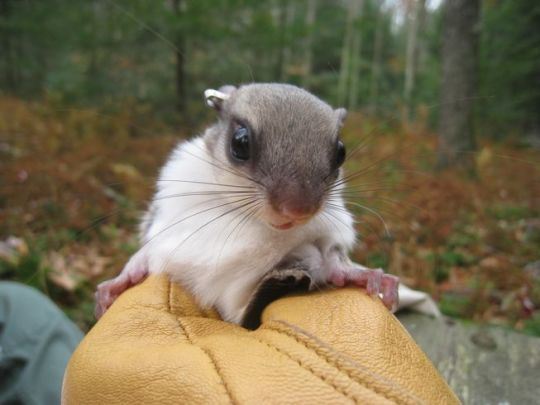
Why the future of West Virginia's rare flying squirrel looks bright | MNN
The squirrel — called the Virginia northern flying squirrel or more commonly the West Virginia northern flying squirrel (WVNFS) — was listed as an endangered species in 1985. But restoration efforts have helped the species rebound, and in 2013 the West Virginia northern flying squirrel joined an exclusive group of success stories — species that have been taken off the endangered list.
Since then, restoration work has ramped up. Now a new report assessing the status of the squirrel in its first five years since coming off of the endangered species list indicates there are many reasons to be optimistic.
Survival of the squirrel depends on survival of its habitat — red spruce-northern hardwood forest, which consists of red spruce, fir, beech, yellow birch, sugar or red maple, hemlock and black cherry. It used to be that the iconic, high-elevation red spruce forest blanketed hundreds of thousands of acres of the Central Appalachians. But much of that was destroyed in the late 1800s and early 1900s due to logging and wildfire.
"This habitat is really special," said Barb Douglas, U.S. Fish and Wildlife Service senior endangered species biologist. "There's some old-growth left, but a lot of it was cut over at the turn of the 20th century."
"If you go into a really old-growth spruce forest, it's mossy and green and smells good," added Laura Hill, a retired fish and wildlife biologist for the service. "It's surreal. It's quiet, the ground is spongy and soft. It's calming and soothing."
In the decades preceding and following the listing of the West Virginia northern flying squirrel, protection and restoration efforts were successful in bringing the red spruce-northern hardwood forest habitat back to more than 173,000 acres in West Virginia.
And the work didn't stop when the squirrel was taken off the endangered species list in 2013. In the following five years, more than 7,455 acres of West Virginia northern flying squirrel habitat has been created, protected or restored. Additionally, even without formal protections, federal biologists have coordinated with project proponents to keep habitat loss at a negligible level of 285 acres — amounting to 26 times more habitat saved than lost.
As a result, the five-year report finds that the squirrel remains well distributed across all seven core areas and continues to be found at new, expanded and historical sites, with long-term potential for a slowly growing population.
#Northern Flying Squirrel#West Virginia Northern Flying Squirrel#Glaucomys sabrinus fuscus#Glaucomys sabrinus#Glaucomys#Pteromyini#Sciurinae#Sciuridae#Sciuromorpha#Rodentia#Mammalia#mammal#squirrel#flying squirrel#conservation#forest
233 notes
·
View notes
Photo
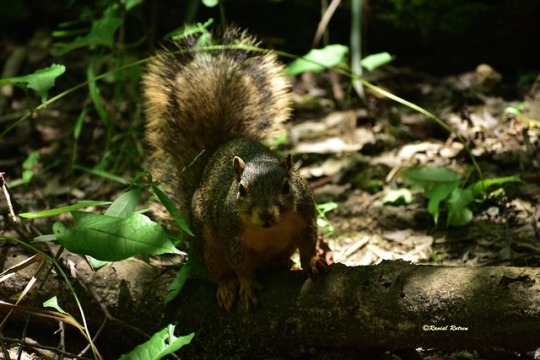
Eastern fox squirrel or Bryant’s fox squirrel (Sciurus niger)
#eastern fox squirrel#Bryant's fox squirrel#Animalia#Chordata#Mammalia#Rodentia#Sciuridae#Sciurinae#Sciurini#Sciurus#Sciurus niger#rodents#squirrels#fox squirrels#Nikon D3400#nikonphotography#nature photography#photographers on tumblr#Black Bayou Lake National Wildlife Refuge#mammals of Canada#mammals of the United States#rodents of North America#fauna of the Eastern United States#fauna of the Plains-Midwest (United States)#urban animals#wildlife
16 notes
·
View notes
Note
i get the feeling i’m not gonna be the only one to send this but ☺️ moira??
The cheating Tiffany mentioned in her interview must have been somebody else. Moira would never cheat on a partner. Never.
Nor would sie cheat in a match, not by sier own choice. (Is it possible to cheat accidentally in tennis? I suppose if you counted an out ball as in by mistake…)
Sier instructor/coach for that stage of the process was an old Banilla named Martin. He’s one of those coaches who’s used to working with disabled clientele of any stripe, and always tries to encourage both the big breakthroughs and the small improvements depending on his client’s usual capacity. On good days, this can be comforting; on bad days, he comes off as incredibly patronizing.
Obviously sier strength is singles, but sie’s played a few doubles games in sier time. Sier most frequent partner in this department is Richard Sciurinae; when the two were younger, his heavy-set nature made mobility difficult, but he’s lost a lot of weight since then (though he’ll never really dip lower than twelve stone, and he’s content with that) and he can keep up with sier quite easily!
He never quite mastered the backhand, though. Fortunately, sie can do both to cover for this, even if it’s at the cost of letting him have any balls. (And that’s why sie is best suited for singles.)
Speaking of, Moira is left-handed. Contrary to popular belief, sie doesn’t think it gives sier any particular advantage.
To bring this back around to Tiffany: sie isn’t all that good at Tetris, or really any video game, but sie’s learning - sie has to master this art as well, sie feels. The best sie can do is a fairly thorough run of point and click games like the Telltale alumini, cus she won’t allow sierself to miss a detail.
Despite myself, ‘she’ still keeps working its way into this post from time to time, like the instance above that I left. Part of me wonders if sie still feels attached to those pronouns despite being nonbinary? That’s something sie may have to address in the long term.
The rainbow hair is actually genetic - sie gets it from sier father (single). That bitch contributed the pink tint.
And with that you might get a decent enough idea of the source of the abandonment-related intrusive thoughts, eh?
3 notes
·
View notes
Video
Red Squirrel von Anne-Marie Kalus
Über Flickr:
I wonder if this little chap is helping Bob. What do you think? www.voteforbob.co.uk
#Rodents#Squirrels#UK Wildlife#Red Squirrel#Eurasian Red Squirrel#Sciuridae#Sciurinae#Sciurini#Sciurus#Sciurus Vulgaris
0 notes
Photo
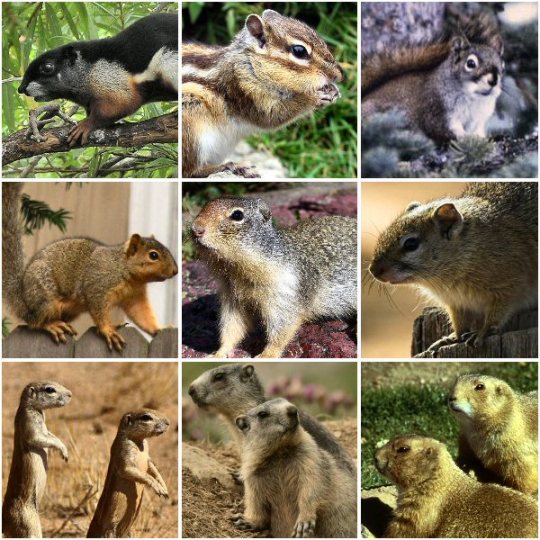
Various members of the family Sciuridae
Callosciurus prevostii
Tamias sibiricus
Tamiasciurus hudsonicus
Sciurus niger
Spermophilus columbianus
Xerus inauris
Cynomys ludovicianus
Scientific classification
Kingdom: Animalia Phylum: Chordata
Clade Synapsida
Class: Mammalia
Order: Rodentia
Suborder: Sciuromorpha
Family: Sciuridae
Fischer de Waldheim, 1817
Subfamilies and tribes
Subfamily Ratufinae
Subfamily Sciurillinae
Subfamily Sciurinae
Subfamily Callosciurinae
Subfamily Xerinae
Tribe Sciurini
Tribe Pteromyini
Tribe Callosciurini
Tribe Funambulini
Tribe Xerini Tribe Protoxerini Tribe Marmotini
and see text
2 notes
·
View notes
Video
#Golub_SV #ZpLike #ЛюдиЗапорожья Бе́лка обыкнове́нная, или ве́кша] (лат. Sciurus vulgaris, «белка обыкновенная») — грызун из семейства беличьих. Единственный представитель рода белок в фауне Украины. Домен: Эукариоты Царство: Животные Подцарство: Эуметазои Без ранга: Двусторонне-симметричные Без ранга: Вторичноротые Тип: Хордовые Подтип: Позвоночные Инфратип: Челюстноротые Надкласс: Четвероногие Класс: Млекопитающие Подкласс: Звери Инфракласс: Плацентарные Надотряд: Euarchontoglires Грандотряд: Грызунообразные Отряд: Грызуны Подотряд: Белкообразные Семейство: Беличьи Подсемейство: Sciurinae Триба: Sciurini Род: Белки Вид: Обыкновенная белка Белка — типичный обитатель лесов. Поскольку основу её питания составляют семена древесных пород, она предпочитает смешанные хвойно-широколиственные леса, которые обеспечивают наилучшие кормовые условия. Любит также зрелые тёмнохвойные насаждения — кедровники, ельники, пихтачи; за ними следуют лиственничники, заросли кедрового стланика и смешанные сосняки. На севере, где растёт в основном сосновое и лиственничное редколесья, плотность её поголовья невысока. В Крыму и на Кавказе освоила культурные ландшафты: сады и виноградники. Образ жизни преимущественно древесный. Белка — живой, подвижный зверёк. Она легко совершает прыжки с дерева на дерево (3—4 м по прямой и 10—15 м по нисходящей кривой), подруливая хвостом. В бесснежный период, а также во время гона значительное время проводит на земле, где перемещается скачками длиной до 1 м. В зимний период перемещается в основном «верхами». При опасности скрывается на деревьях, обычно затаиваясь в кроне. Активна в утренние и вечерние часы, от 60 % до 80 % этого времени проводя в поисках пищи. (at Парк Гагарина) https://www.instagram.com/p/B5z5vKRp1XxGf6b_dX-1c8Kcz5wCL97NZBudDU0/?igshid=rsb0mzwmu8me
0 notes
Link
This is a list of the 60 mammal species recorded in Ireland. A new Red List of Irish terrestrial mammals was published in 2009 and all 26 terrestrial species native to Ireland, or naturalised in Ireland before 1500, were assessed. Of these, one was found to be regionally extinct (grey wolf Canis lupus), one achieved a threat status of Vulnerable (black rat Rattus rattus), three were found to be Near Threatened (Leisler's bat Nyctalus leisleri), otter (Lutra lutra) and red squirrel (Sciurus vulgaris), one was data deficient (Brandt's bat Myotis brandtii) and the remaining 20 were of least concern.[1]
The following tag are used to highlight each species' conservation status as assessed by the IUCN:
Subclass: Theria
Infraclass: Eutheria
Order: Diprotodontia
Though most marsupials make up a great part of the fauna in the Australian region, the red-necked wallaby has been introduced and a population is currently breeding on the island of Lambay.[2]
Family: Macropodidae (kangaroos, wallabies, and kin
Genus: Macropus
Red-necked wallaby Macropus rufogriseus EN introduced
Order: Rodentia (rodents)
Red squirrel
Rodents make up the largest order of mammals, with over 40 percent of mammalian species. They have two incisors in the upper and lower jaw which grow continually and must be keep short by gnawing. Most rodents are small though the capybara can weigh up to 45 kg (100 lb).
Suborder: Sciurognathi
Family: Sciuridae (squirrels)
Family: Cricetidae
Family: Muridae (mice, rats, etc.)
Family: Gliridae
Subfamily: Sciurinae
Genus: Sciurus
Red squirrel Sciurus vulgaris NT
Eastern grey squirrel Sciurus carolinensis LC introduced
Subfamily: Arvicolinae
Genus: Myodes
Bank vole Myodes glareolus LC introduced
Subfamily: Murinae
Genus: Mus
Genus: Apodemus
Genus: Rattus
House mouse Mus musculus LC
Wood mouse Apodemus sylvaticus LC
Brown rat Rattus norvegicus LC introduced
Black rat Rattus rattus VU introduced
Subfamily: Leithiinae
Genus: Muscardinus
Hazel dormouse Muscardinus avellanarius LC introduced[3]
Order: Lagomorpha (lagomorphs)
European rabbit
The lagomorphs comprise two families, Leporidae (hares and rabbits), and Ochotonidae (pikas). Though they can resemble rodents, and were classified as a superfamily in that order until the early 20th century, they have since been considered a separate order. They differ from rodents in a number of physical characteristics, such as having four incisors in the upper jaw rather than two.
Family: Leporidae (rabbits, hares)
Genus: Oryctolagus
Genus: Lepus
European rabbit Oryctolagus cuniculus LC introduced
Mountain hare Lepus timidus LC
European hare Lepus europaeus LC introduced
Order: Erinaceomorpha (hedgehogs and gymnures
West European hedgehog
The order Erinaceomorpha contains a single family, Erinaceidae, which comprise the hedgehogs and gymnures. The hedgehogs are easily recognised by their spines while gymnures look more like large rats.
Family: Erinaceidae (hedgehogs)
Subfamily: Erinaceinae
Genus: Erinaceus
West European hedgehog Erinaceus europaeus LC
Order: Soricomorpha (shrews, moles, and solenodons)
Eurasian pygmy shrew
The "shrew-forms" are insectivorous mammals. The shrews and solenodons closely resemble mice while the moles are stout-bodied burrowers.
Family: Soricidae (shrews)
Subfamily: Soricinae
Genus: Sorex
Genus: Crocidura
Eurasian pygmy shrew Sorex minutus LC introduced[4]
Greater white-toothed shrew Crocidura russula LC introduced[5]
Order: Chiroptera (bats)
Daubenton's bat
Brown long-eared bat
The bats' most distinguishing feature is that their forelimbs are developed as wings, making them the only mammals in the world naturally capable of flight. Bat species account for about 20% of all mammals.
Family: Vespertilionidae
Family: Rhinolophidae
Subfamily: Myotinae
Subfamily: Vespertilioninae
Genus: Myotis
Daubenton's bat Myotis daubentonii LC
Whiskered bat Myotis mystacinus LC
Brandt's bat Myotis brandti DD
Natterer's bat Myotis nattereri LC
Genus: Nyctalus
Genus: Pipistrellus
Genus: Plecotus
Leisler's bat Nyctalus leisleri NT
Common pipistrelle Pipistrellus pipistrellus LC
Soprano pipistrelle Pipistrellus pygmaeus LC
Nathusius pipistrelle Pipistrellus nathusii LC
Brown long-eared bat Plecotus auritus LC
Subfamily: Rhinolophinae
Genus: Rhinolophus
Lesser horseshoe bat Rhinolophus hipposideros LC
Order: Cetacea (whales)
The order Cetacea includes whales, dolphins, and porpoises. They are the mammals most fully adapted to aquatic life with a spindle-shaped nearly hairless body, protected by a thick layer of blubber, and forelimbs and tail modified to provide propulsion underwater.
Suborder: Mysticeti
Suborder: Odontoceti
Family: Balaenidae (right whales)
Family: Eschrichtiidae (gray whales)
Family: Balaenopteridae (rorqual)
Family: Megapterinae
Genus: Balaena
Genus: Eubalaena
Bowhead whale Balaena mysticetus EN vagrant[6]
North Atlantic right whale Eubalaena glacialis CR
Genus: Eschrichtius
Gray whale Eschrichtius robustus EX
Subfamily: Balaenopterinae
Genus: Balaenoptera
Common minke whale Balaenoptera acutorostrata LC
Sei whale Balaenoptera borealis EN
Fin whale Balaenoptera physalus NT
Blue whale Balaenoptera musculus EN [7]
Genus: Megaptera
Humpback whale Megaptera novaeangliae LC
Superfamily: Platanistoidea
Family: Monodontidae (narwhals)
Family: Phocoenidae (porpoises)
Family: Physeteridae (sperm whales)
Family: Kogiidae
Family: Ziphidae (beaked whales)
Subfamily: Hyperoodontinae
Family: Delphinidae (marine dolphins)
Genus: Delphinapterus
Beluga Delphinapterus leucas LC vagrant
Genus: Phocoena
Harbour porpoise Phocoena phocoena VU
Genus: Physeter
Sperm whale Physeter macrocephalus VU
Genus: Kogia
Pygmy sperm whale Kogia breviceps DD
Genus: Ziphius
Cuvier's beaked whale Ziphius cavirostris DD
Genus: Hyperoodon
Genus: Mesoplodon
Northern bottlenose whale Hyperoodon ampullatus DD
Sowerby's beaked whale Mesoplodon bidens DD
Gervais' beaked whale Mesoplodon europaeus DD
True's beaked whale Mesoplodon mirus DD
Genus: Delphinus
Genus: Tursiops
Genus: Stenella
Genus: Lagenorhynchus
Genus: Grampus
Genus: Globicephala
Genus: Pseudorca
Genus: Orcinus
Short-beaked common dolphin Delphinus delphis DD
Common bottlenose dolphin Tursiops truncatus DD
Striped dolphin Stenella coeruleoalba DD
Atlantic white-sided dolphin Lagenorhynchus acutus LC
White-beaked dolphin Lagenorhynchus albirostris LC
Risso's dolphin Grampus griseus DD
Long-finned pilot whale Globicephala melas DD
False killer whale Pseudorca crassidens DD
Orca Orcinus orca DD
See also
List of chordate orders
List of regional mammals lists
List of prehistoric mammals
Mammal classification
New mammal species
Fauna of Ireland
0 notes
Photo
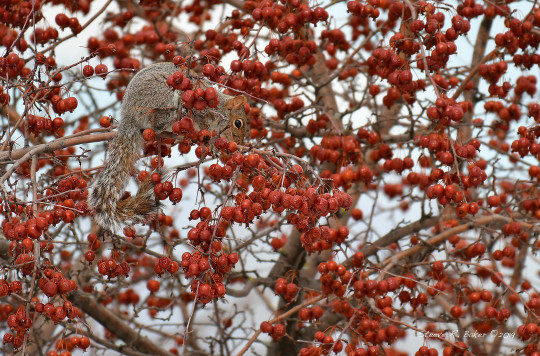
Eastern grey squirrel (Sciurus carolinensis)
Photo by Steeve R. Baker
#fave#eastern gray squirrel#gray squirrel#sciurus carolinensis#sciurus#sciurina#sciurini#sciurinae#sciuridae#sciuromorpha#rodentia#glires#gliriformes#euarchontoglires#boreoeutheria#eutheria#mammalia#tetrapoda#vertebrata#chordata
11 notes
·
View notes
Photo

Eastern gray squirrel (Sciurus carolinensis)
Photo by Dan Weeks
#eastern gray squirrel#gray squirrel#sciurus carolinensis#sciurus#sciurina#sciurini#sciurinae#sciuridae#sciuromorpha#rodentia#glires#gliriformes#euarchontoglires#boreoeutheria#eutheria#mammalia#tetrapoda#vertebrata#chordata
5 notes
·
View notes
Text

Arizona gray squirrel (Sciurus arizonensis)
Photo by Robyn Waayers
#arizona gray squirrel#sciurus arizonensis#sciurus#sciurini#sciurinae#sciuridae#sciuromorpha#rodentia#euarchontoglires#placentalia#mammalia#tetrapoda#vertebrata#chordata
33 notes
·
View notes
Text
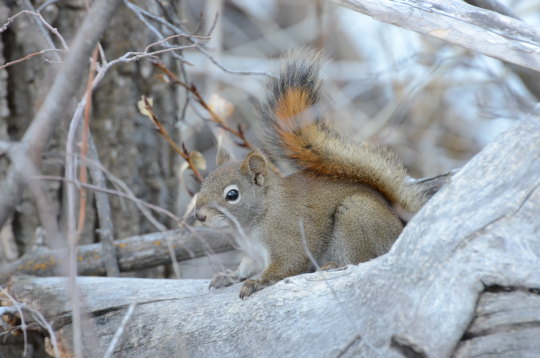
Eastern fox squirrel (Sciurus niger)
Photo by David Croft
#eastern fox squirrel#fox squirrel#sciurus niger#sciurus#sciurini#sciurinae#sciuridae#sciuromorpha#rodentia#glires#gliriformes#euarchontoglires#boreoeutheria#eutheria#mammalia#tetrapoda#vertebrata#chordata
34 notes
·
View notes
Photo

American red squirrel (Tamiasciurus hudsonicus)
Photo by Fabrice Stoger
#american red squirrel#tamiasciurus hudsonicus#tamiasciurus#sciurini#sciurinae#sciuridae#sciuromorpha#rodentia#glires#gliriformes#euarchontoglires#boreoeutheria#eutheria#mammalia#tetrapoda#vertebrata#chordata
242 notes
·
View notes
Photo

Red and white giant flying squirrel (Petaurista alborufus)
Photo by Jono Dashper
#red and white giant flying squirrel#giant flying squirrel#petaurista alborufus#petaurista#pteromyini#sciurinae#sciuridae#sciuromorpha#rodentia#glires#euarchontoglires#boreoeutheria#eutheria#mammalia#tetrapoda#vertebrata#chordata
72 notes
·
View notes
Photo

Eastern fox squirrel (Sciurus niger)
Photo by Robyn Waayers
#eastern fox squirrel#fox squirrel#sciurus niger#sciurus#sciurini#sciurinae#sciuridae#sciuromorpha#rodentia#glires#gliriformes#euarchontoglires#boreoeutheria#eutheria#mammalia#tetrapoda#vertebrata#chordata
10 notes
·
View notes
Photo

A red squirrel forages for food ahead of winter in the Widdale red squirrel reserve.
Photograph: Danny Lawson/PA
(via The week in wildlife – in pictures | Environment | The Guardian)
#Eurasian Red Squirrel#Red Squirrel#Sciurus vulgaris#Sciurus#Sciurini#Sciurinae#Sciuridae#Sciuromorpha#Rodentia#Mammalia#squirrel#United Kingdom
35 notes
·
View notes
